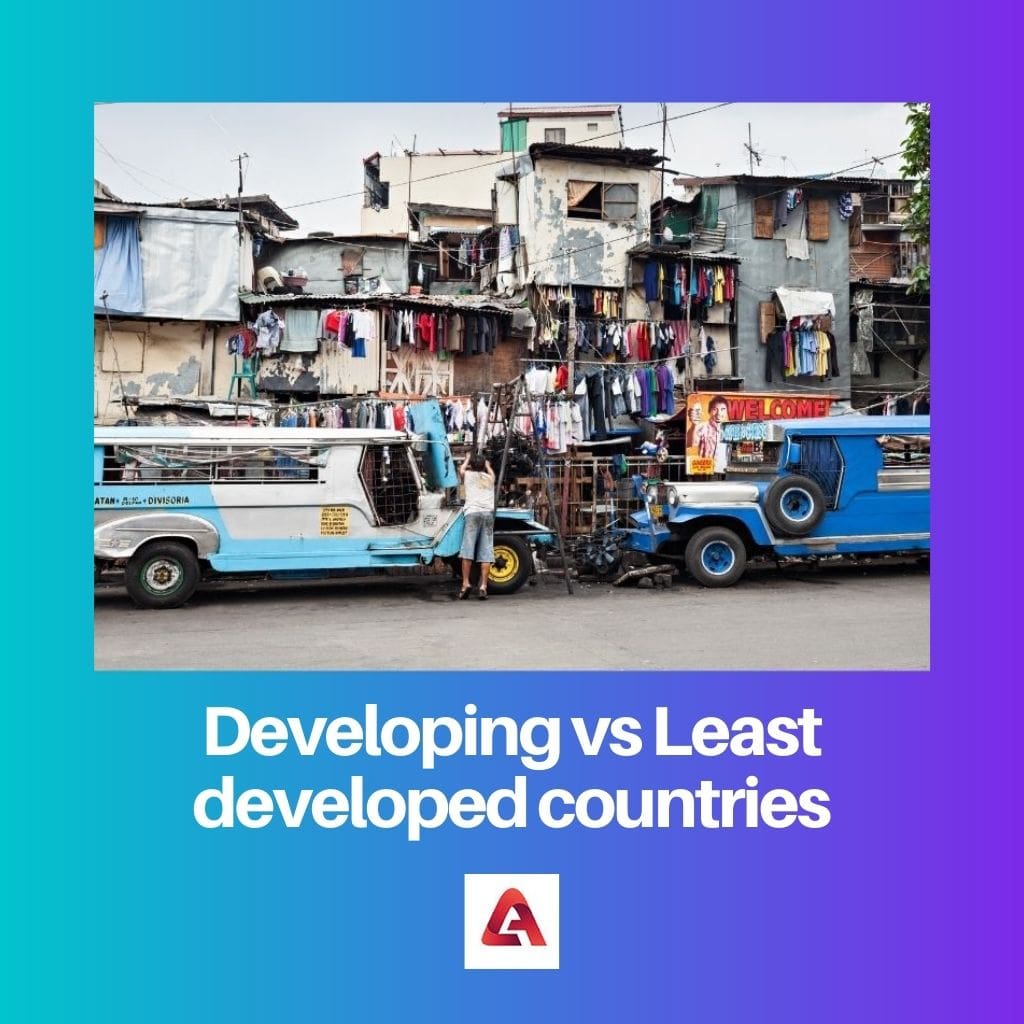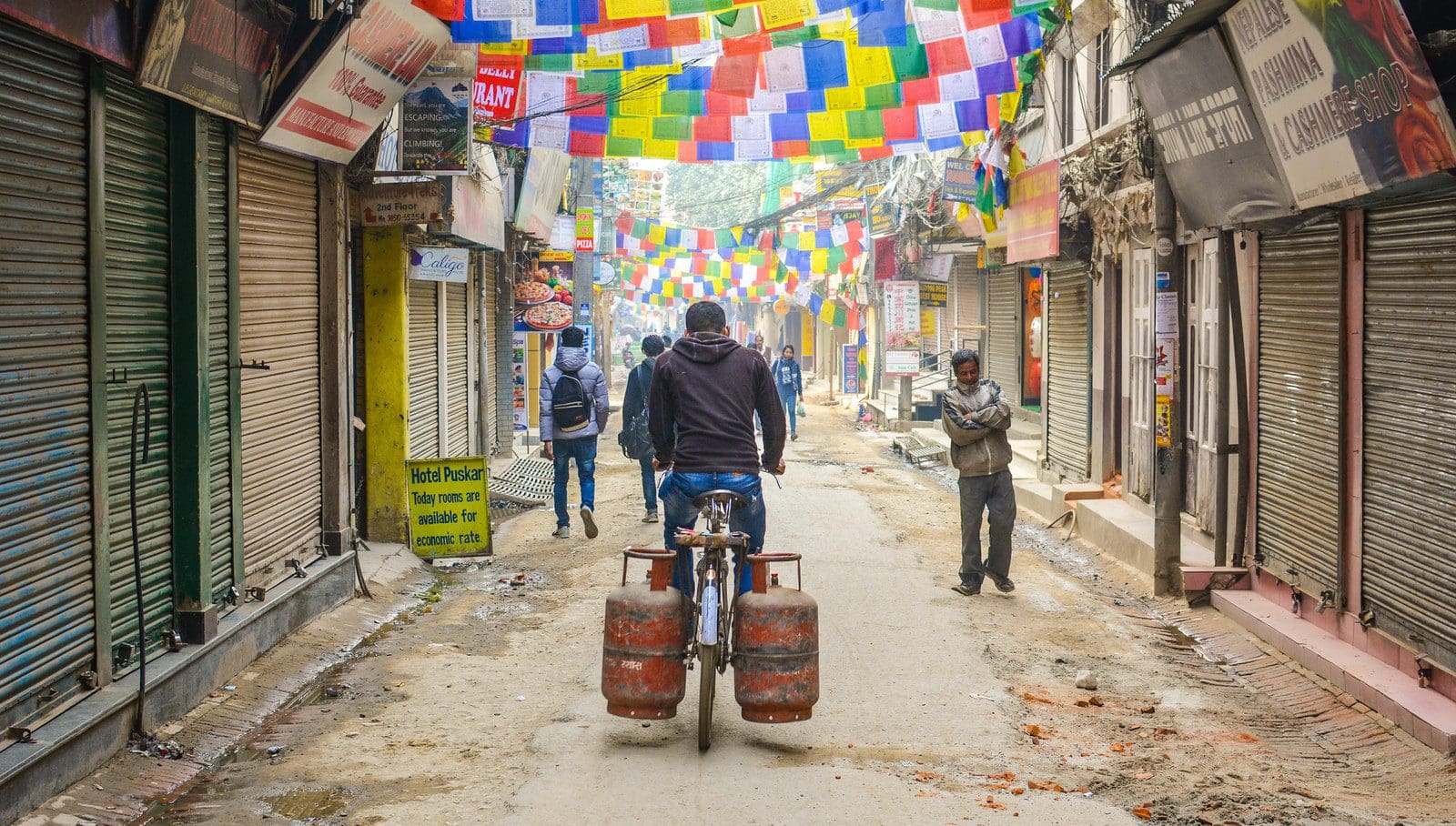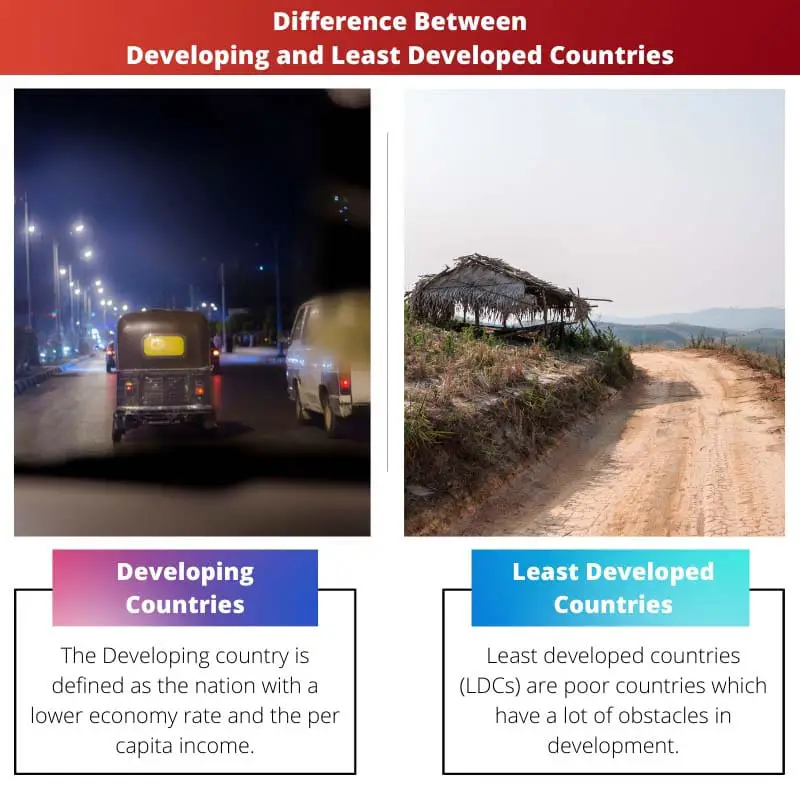Developing countries typically exhibit moderate to high levels of industrialization and economic growth, often with significant infrastructure development and access to technology, but still face challenges such as poverty, inequality, and limited access to basic services. Least developed countries, on the other hand, are characterized by extreme poverty, low levels of human development, inadequate infrastructure, and heavy reliance on agriculture.
Key Takeaways
- Developing countries have lower economic development, industrialization, and human development; least developed countries (LDCs) are the most economically and socially vulnerable nations.
- Developing countries may have moderate levels of income and infrastructure; LDCs face extreme poverty, weak infrastructure, and low human development indicators.
- Developing countries experience rapid growth and industrialization; LDCs require significant international support and investment to overcome their challenges.
Developing vs Least Developed Countries
The difference between Developing countries and Least Developed countries is the per capita income of the people. Developing countries survive marginally, with their per capita income ranging between average to below average, while the least developed countries have very poor per capita income.

Comparison Table
| Feature | Developing Countries | Least Developed Countries (LDCs) |
|---|---|---|
| Economic Status | Lower income and standard of living compared to developed countries | Low income, limited industrialization, and high vulnerability to economic shocks. |
| Human Development Index (HDI) | Generally lower HDI scores (combines life expectancy, education, and income) | Among the lowest HDI scores in the world. |
| Industrialization | Varied levels of industrial development, but generally less industrialized than developed countries. | Very low levels of industrialization, with a heavy reliance on agriculture or resource extraction. |
| Infrastructure | Less developed infrastructure, including transportation, communication, and sanitation systems. | Severely underdeveloped infrastructure, hindering economic growth and basic needs fulfillment. |
| Poverty Rates | Higher poverty rates compared to developed countries. | Extremely high poverty rates, with a significant portion of the population living below the national poverty line. |
| Education | Lower literacy rates and limited access to education, especially for girls. | Very low literacy rates and limited access to quality education. |
| Healthcare | Limited access to healthcare services and higher infant mortality rates. | Severely limited access to healthcare, with inadequate medical facilities and personnel. |
| Investment | Lower levels of foreign and domestic investment. | Very low levels of investment, creating a challenge for economic development. |
| Vulnerability | More vulnerable to natural disasters, climate change, and economic instability. | Extremely vulnerable to external shocks due to weak economies and limited resources. |
| Examples | China, India, Brazil, Thailand | Afghanistan, Haiti, South Sudan, Yemen |
What are Developing Countries?
Economic Characteristics
- Industrialization: Developing countries typically exhibit a growing industrial base, with sectors such as manufacturing, construction, and services contributing increasingly to their GDP. However, the extent of industrialization varies widely among these nations.
- Economic Growth: These countries often experience relatively high rates of economic growth compared to developed nations. This growth may be driven by factors such as foreign investment, export-oriented industries, and natural resource extraction.
- Infrastructure Development: Developing countries aim to enhance their infrastructure, including transportation networks, energy systems, telecommunications, and healthcare facilities. Infrastructure investment is crucial for supporting economic growth and improving living standards.
Social Characteristics
- Poverty and Inequality: Despite economic growth, many developing countries grapple with widespread poverty and income inequality. Factors such as unequal distribution of wealth, lack of access to education and healthcare, and limited job opportunities contribute to persistent poverty within these nations.
- Access to Basic Services: Access to essential services such as clean water, sanitation, healthcare, and education remains inadequate in many developing countries. Governments and international organizations often prioritize improving access to these services to enhance human development outcomes.
- Urbanization: Rapid urbanization is a common trend in developing countries, as rural populations migrate to cities in search of better economic opportunities. However, unplanned urban growth can strain infrastructure and social services, leading to informal settlements and slums.
Challenges and Opportunities
- Environmental Sustainability: Developing countries face environmental challenges such as deforestation, pollution, and climate change impacts. Balancing economic development with environmental conservation is crucial for long-term sustainability.
- Political Instability: Political instability, corruption, and governance issues can hinder development efforts in many developing countries. Strengthening institutions, promoting good governance, and fostering transparency are essential for sustainable development.
- Access to Technology: Bridging the digital divide is essential for the development of developing countries. Access to technology and information networks can facilitate economic growth, improve education and healthcare delivery, and empower marginalized communities.

What are Least Developed Countries?
Criteria for Classification
- Income: LDCs typically have low per capita income levels, often falling below a certain threshold set by international organizations such as the United Nations.
- Human Assets: These countries exhibit low levels of human development, including inadequate access to education, healthcare, and nutrition, resulting in high rates of infant mortality, malnutrition, and illiteracy.
- Economic Vulnerability: LDCs are susceptible to external economic shocks due to factors such as reliance on primary commodities, limited export diversification, and exposure to natural disasters.
Characteristics
- Extreme Poverty: Poverty is pervasive in LDCs, with a significant proportion of the population living below the poverty line. Limited access to basic necessities such as food, clean water, shelter, and healthcare exacerbates the plight of the poor.
- Underdeveloped Infrastructure: LDCs often lack adequate infrastructure, including transportation networks, energy systems, sanitation facilities, and healthcare services. Poor infrastructure hampers economic growth and impedes access to essential services.
- Dependence on Agriculture: Many LDCs rely heavily on agriculture for livelihoods and economic sustenance. However, agricultural productivity is often low, and farmers face challenges such as land degradation, climate variability, and lack of access to modern inputs and technologies.
Development Challenges
- Limited Access to Education and Healthcare: Education and healthcare systems in LDCs are underdeveloped, leading to low literacy rates, inadequate healthcare services, and high mortality rates, particularly among women and children.
- Weak Governance and Institutional Capacity: Weak governance, corruption, and institutional inefficiencies undermine development efforts in LDCs. Strengthening governance structures, promoting transparency, and building institutional capacity are essential for sustainable development.
- Debt Burden: Many LDCs struggle with high levels of external debt, which constrains their ability to invest in development priorities such as education, healthcare, and infrastructure. Debt relief and sustainable financing mechanisms are necessary to alleviate the debt burden on these countries.
International Support and Assistance
- Official Development Assistance (ODA): LDCs rely heavily on foreign aid and assistance from bilateral and multilateral donors to finance their development projects and programs. ODA plays a crucial role in addressing the funding gap for priority sectors in LDCs.
- Special Support Measures: International organizations such as the United Nations, World Bank, and International Monetary Fund provide targeted support and assistance to LDCs through initiatives such as the Enhanced Integrated Framework (EIF) and the Istanbul Programme of Action (IPoA) for the Least Developed Countries.
- Trade Preferences: LDCs benefit from preferential trade arrangements, such as duty-free and quota-free access to markets in developed countries, aimed at promoting their economic integration and export diversification.

Main Differences Between Developing and Least Developed Countries
- Developing Countries:
- Moderate to high levels of industrialization and economic growth.
- Relatively better infrastructure development compared to least developed countries.
- Poverty and inequality persist but may be less extreme than in least developed countries.
- Access to basic services such as education and healthcare is comparatively better.
- Greater diversification of the economy beyond agriculture.
- Least Developed Countries (LDCs):
- Characterized by extreme poverty and low human development indices.
- Severely underdeveloped infrastructure, including inadequate access to essential services.
- Heavy reliance on agriculture for livelihoods and economic sustenance.
- Higher susceptibility to external economic shocks and natural disasters.
- Dependent on significant international aid and assistance for development efforts.

- https://www.econstor.eu/bitstream/10419/63616/1/537368140.pdf
- https://www.iatp.org/sites/default/files/Interests_and_Options_of_Developing_and_Least-.pdf

The categorization of countries based on their development levels, along with the elucidation of key indicators, makes for a compelling read. It offers a nuanced understanding of the global developmental landscape.
Absolutely. The article’s meticulous analysis and comprehensive breakdown of indicators lend depth to the discourse on global development.
The article is very informative and well-structured, providing a comprehensive understanding of the classification of countries based on their development level. It’s a great guide for anyone looking to learn more about this topic.
Absolutely, the depth of information here is commendable. It delves into various parameters and indicators, providing a holistic view of the subject.
I couldn’t agree more. This article is a fantastic resource for understanding the nuances of global development.
While the article covers the essential parameters and differences between developing and least developed countries, a comparative analysis of specific case studies would have enriched the discussion further.
I concur with the sentiment. Case studies could have elucidated the practical implications of these classifications in real-world scenarios.
That’s a valid point. Incorporating case studies would have provided a more contextualized understanding of the concepts and classifications.
The article’s comprehensive breakdown of the criteria for least developed country classification is enlightening. It effectively underscores the multifaceted dimensions of economic vulnerability and instability.
Indeed, the article provides a robust overview of the criteria for least developed countries classification, shedding light on the nuanced factors that contribute to economic vulnerability.
Absolutely. The article’s detailed examination of the criteria adds depth to the understanding of least developed countries’ challenges.
The delineation of common characteristics of developing countries is comprehensive and illuminating. It encapsulates the multifaceted challenges these nations confront in their pursuit of economic progress.
I couldn’t agree more. The article adeptly captures the myriad complexities and obstacles faced by developing countries.
The article effectively delineates the main differences between developing and least developed countries, providing a lucid contrast that aids in discerning the economic disparities across nations.
I couldn’t agree more. The article’s emphasis on key distinctions offers a cogent overview of the varying economic landscapes.
The article’s breakdown of common characteristics of developing countries is a valuable resource for understanding the multifaceted challenges these nations face. It offers a comprehensive glimpse into the complexities of global development.
I couldn’t agree more. The article’s analysis of common characteristics provides a comprehensive view of the obstacles and impediments encountered by developing countries.
The article presents a well-researched account of the criteria for classifying least developed countries. It sheds light on the challenges these nations face and the support measures that can aid their development.
I concur with the assessment. The article effectively underscores the significance of addressing economic vulnerability and its impact on least developed nations.
Indeed, the breakdown of criteria for least developed countries classification offers valuable insights into the multifaceted nature of economic vulnerability.
While the article provides a thorough overview, I would have appreciated a deeper exploration of the historical and geopolitical factors that contribute to the development disparities among nations.
That’s a valid point. A more nuanced analysis of the historical, social, and political dimensions would have added further depth to the discussion.
The comparison table is particularly insightful, highlighting the key differences between developing and least developed countries. It’s a valuable reference for analyzing global economic disparities.
I found the table to be incredibly helpful in visualizing the disparities. It succinctly captures the core distinctions between the two classifications.